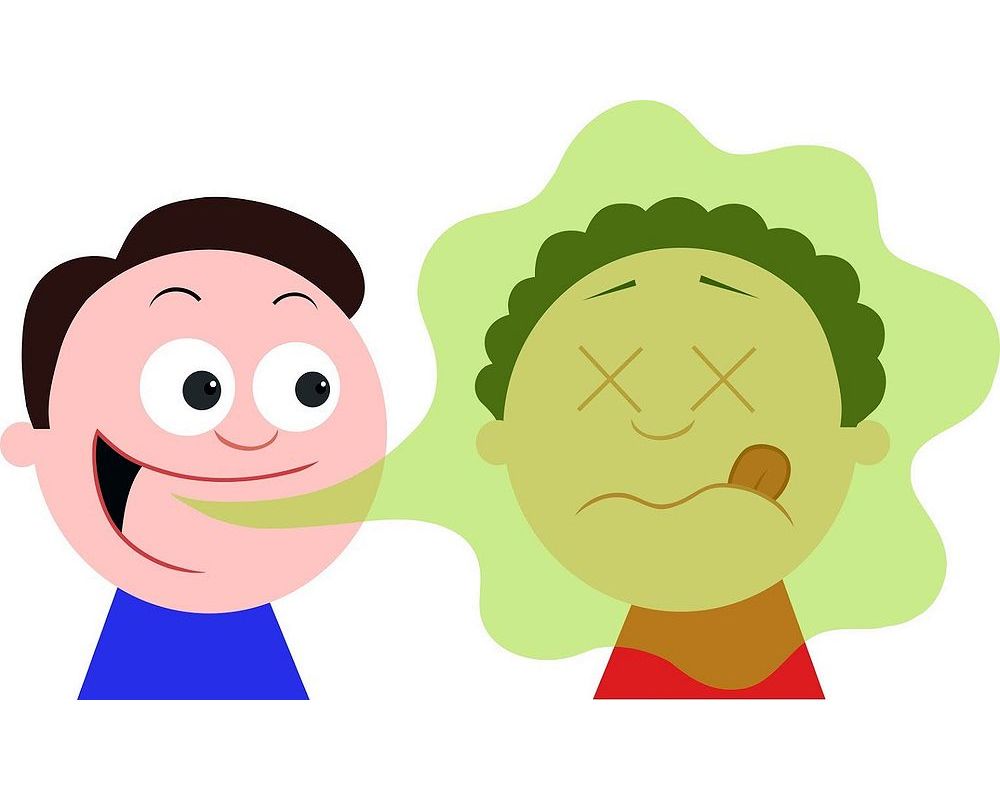Persistent bad breath, or halitosis, is a frequent complaint in dental practice and often attributed solely to inadequate brushing.
📌 Recommended Article :
Video 🔽 The types of bad breath that we CAN'T treat in the dental office ... Halitosis can have an oral origin, that means that the cause of bad breath is in the oral cavity, such as lack of hygiene, the presence of cavities, inflammation and bleeding gums.However, chronic halitosis may originate from multiple oral and systemic sources, many of which require targeted diagnosis and interdisciplinary management. Recognizing causes beyond poor hygiene is essential for accurate treatment and improved patient outcomes.
Advertisement
✅ Understanding Persistent Halitosis
Most cases of halitosis are oral in origin and associated with volatile sulfur compounds (VSCs) produced by anaerobic bacteria. Yet when halitosis persists despite proper hygiene, clinicians must consider non-hygiene-related etiologies, including tongue coating, infections, airway conditions, gastrointestinal disorders, and dietary factors.
📌 Recommended Article :
Video 🔽 Risk of gum disease for smokers ... We all know the effects of tobacco on our body, none positive by the way, and the oral cavity does not escape its harmful effects. It has been shown that smoking increases the risk of periodontitis and also affects the response to periodontal therapies.✅ Key Causes Beyond Poor Oral Hygiene
1. Tongue Coating and Microbial Imbalance
The dorsum of the tongue harbors anaerobic bacteria capable of producing VSCs. Excess coating may result from mouth breathing, dehydration, high-protein diets, or reduced saliva flow. Tongue cleaning remains one of the most effective evidence-based strategies.
2. Upper Airway and ENT Conditions
Chronic sinusitis, tonsilloliths, allergic rhinitis, and post-nasal drip contribute to extra-oral halitosis. Tonsilloliths, in particular, trap food debris and bacteria, causing a strong odor even in children.
3. Salivary Dysfunction
Xerostomia (dry mouth) from medications, mouth breathing, or systemic diseases reduces natural cleansing mechanisms, allowing VSC accumulation.
4. Dental Caries and Periodontal Disease
Although not strictly “poor hygiene,” active infections such as deep caries, necrotic pulps, or gingivitis can cause significant odor. Persistent halitosis may indicate an untreated odontogenic infection.
5. Gastrointestinal and Metabolic Conditions
Conditions such as gastroesophageal reflux disease (GERD), Helicobacter pylori infection, diabetes (ketone breath), and liver or kidney disorders can manifest as chronic halitosis. These are uncommon but clinically relevant when oral causes have been ruled out.
📊 Comparative Table: Oral vs. Extra-Oral Halitosis Sources
| Aspect | Advantages | Limitations |
|---|---|---|
| Oral Halitosis Evaluation | Easy to diagnose; responds well to dental treatment | May overlook systemic or ENT-related causes |
| Extra-Oral Halitosis Evaluation | Identifies underlying medical or airway disorders | Requires multidisciplinary care and extended diagnostics |
💬 Discussion
Evaluating persistent bad breath requires a multidisciplinary perspective. Identification of the primary source is more important than masking odor, and dentists must distinguish between oral halitosis, extra-oral halitosis, and pseudo-halitosis. Advanced diagnostic tools, such as gas chromatography and sulfide monitoring, have improved the accuracy of identifying VSCs and their bacterial origins. Parents and caregivers should be educated that chronic malodor is not always a reflection of poor care but may be a sign of underlying pathology requiring medical assessment.
📌 Recommended Article :
Video 🔽 Are Tonsil Stones Causing Your Bad Breath? ... Lack of oral hygiene is one of the causes of the presence of tonsil stones. They are whitish in color, not malignant, and usually small, but there are also large stones that can cause pain when passing food.🔎 Recommendations
▪️ Perform complete intraoral and extraoral assessments when halitosis persists.
▪️ Encourage daily tongue cleaning, hydration, and assessment of salivary flow.
▪️ Treat all infectious sources, including caries, pulp infections, and gingival disease.
▪️ Refer to ENT, gastroenterology, or pediatrics when systemic or airway causes are suspected.
▪️ Avoid unnecessary antibiotic prescriptions; focus on etiology-based management.
✍️ Conclusion
Persistent halitosis is a multifactorial condition that extends beyond inadequate brushing or flossing. A comprehensive diagnostic approach allows clinicians to differentiate between oral and systemic origins and deliver targeted treatment. Early identification of non-hygienic causes is crucial to prevent chronic discomfort, social distress, and delayed medical diagnosis.
📚 References
✔ Aydin, M., & Harvey-Woodworth, C. N. (2014). Halitosis: A new definition and classification. British Dental Journal, 217(1), E1. https://doi.org/10.1038/sj.bdj.2014.551
✔ Porter, S. R., & Scully, C. (2006). Oral malodour (halitosis). BMJ, 333(7569), 632–635. https://doi.org/10.1136/bmj.38954.631968.AE
✔ Seerangaiyan, K., van Winkelhoff, A. J., & Harmsen, H. J. (2017). The tongue microbiome in healthy subjects and patients with halitosis. Journal of Breath Research, 11(3), 036010. https://doi.org/10.1088/1752-7163/aa7b51
✔ Scully, C., & Greenman, J. (2008). Halitosis (breath odor). Periodontology 2000, 48(1), 66–75. https://doi.org/10.1111/j.1600-0757.2008.00266.x
📌 More Recommended Items
► How to Treat Tonsil Stones
► Do You Have Gingivitis or Periodontitis? | Different Stages Of Gum Disease
► Modern Diagnostic and Therapeutic Approaches for Halitosis in Children and Adults









